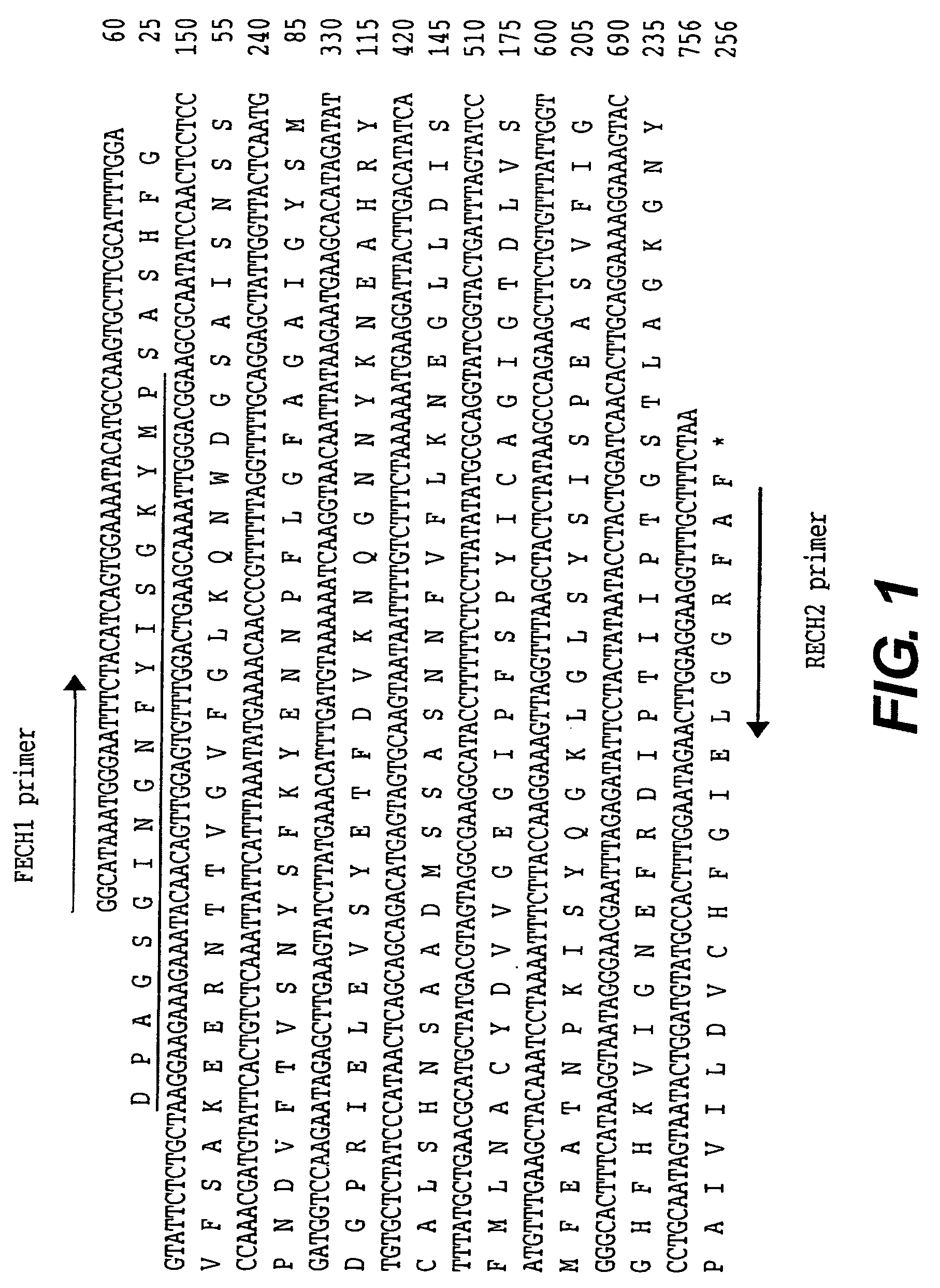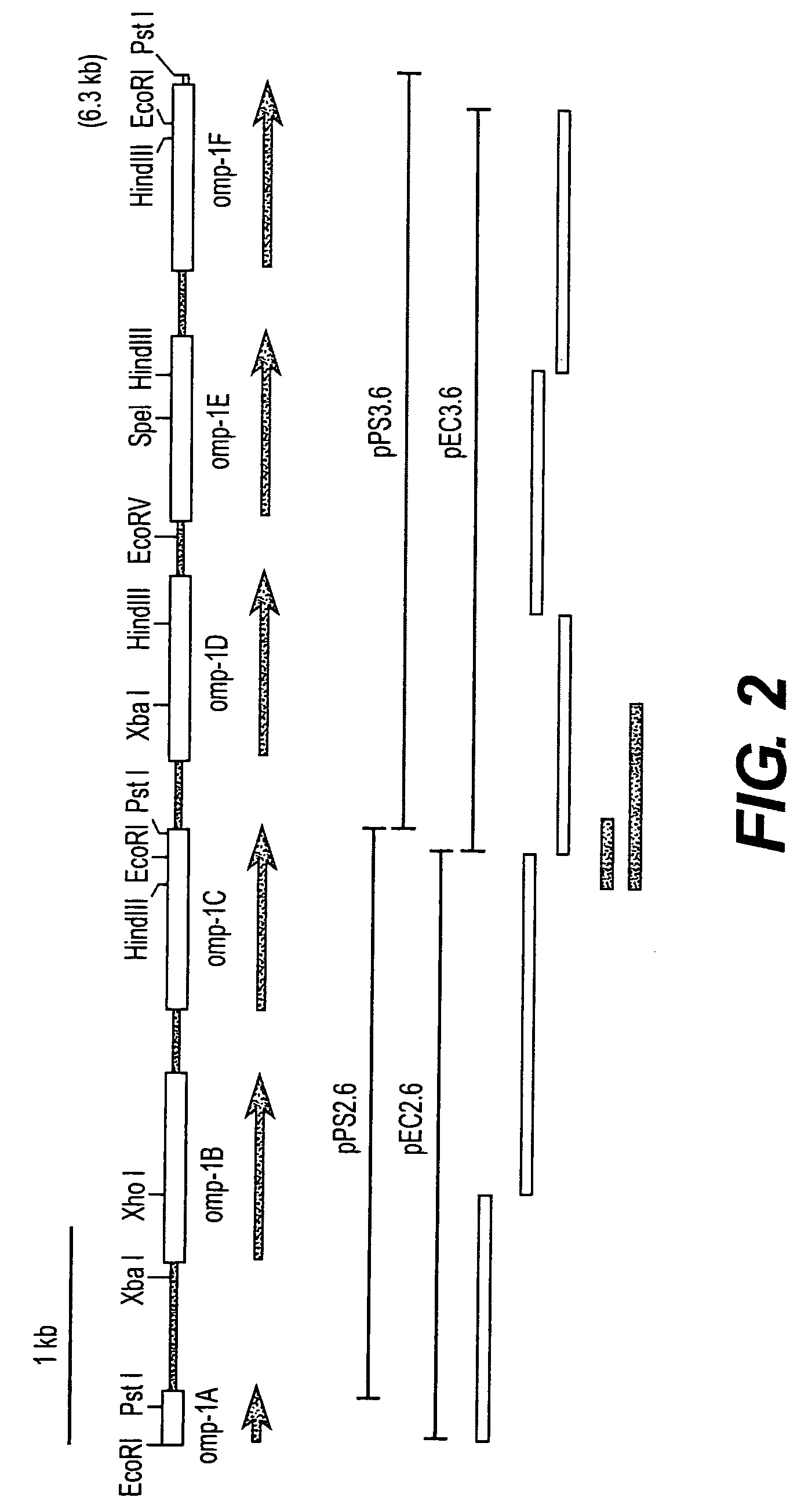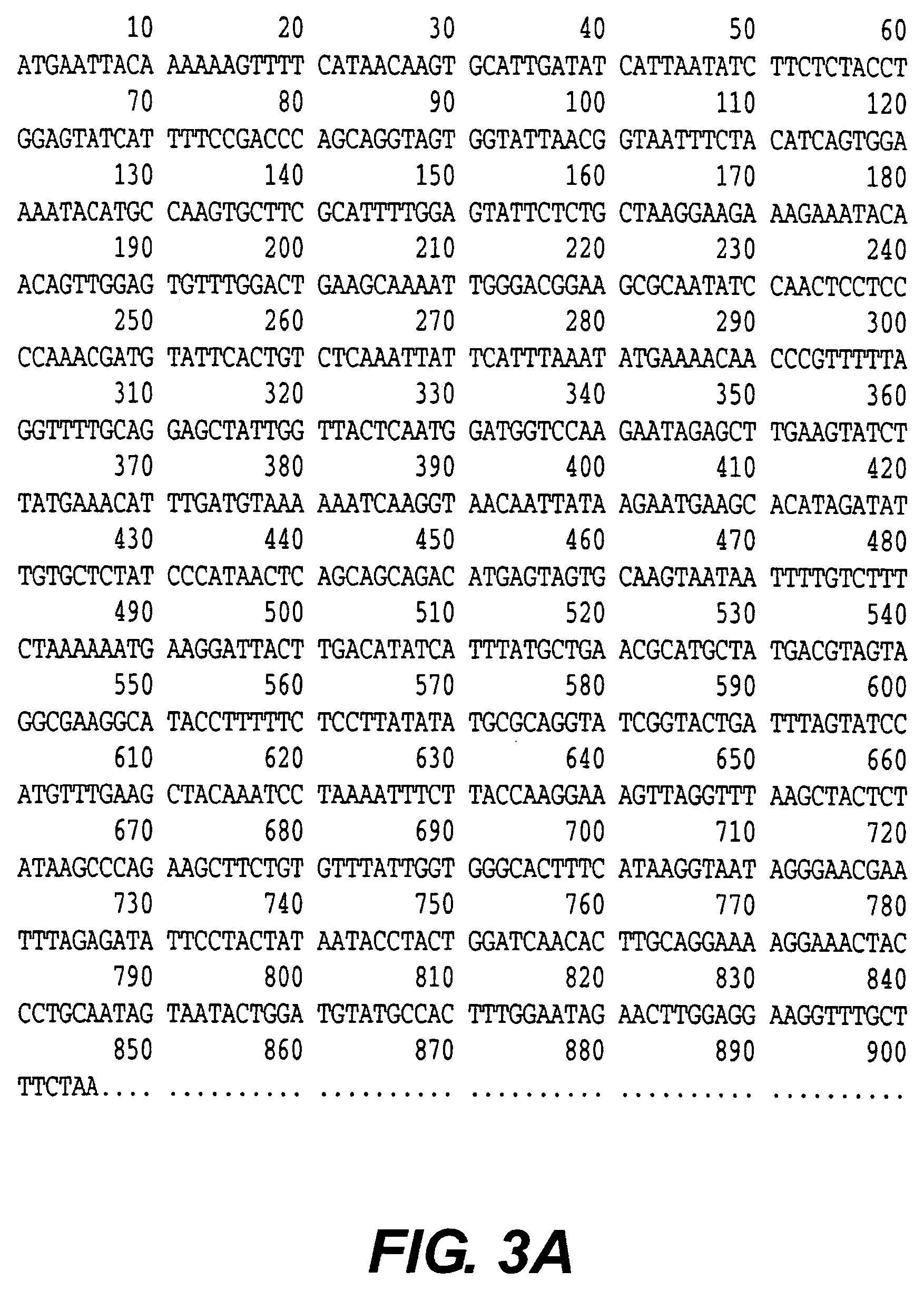Outer membrane protein of Ehrlichia canis and Ehrlichia chaffeensis
a technology of outer membrane protein and ehrlichia chaffeensis, which is applied in the field of outer membrane protein of ehrlichia canis and ehrlichia chaffeensis, can solve the problems of false positive of the test, if the test has serious limitations, and the infection of dogs that do not respond well to antibiotics, so as to reduce the infection level
- Summary
- Abstract
- Description
- Claims
- Application Information
AI Technical Summary
Benefits of technology
Problems solved by technology
Method used
Image
Examples
example 1
Assaying for the Presence of Anti-OMP-1 Antibody in a Patient
[0102]Convalescent-phase serum from a patient with clinical signs of human ehrlichiosis was used. Western blot analyses using the rP28 protein as antigen was performed with 1:1,000 dilutions of this serum. Alkaline phosphatase-conjugated affinity-purified anti-human immunoglobulin G (Kirkegaard & Perry Laboratories, Inc., Gaithersburg, Md.) was used at a 1:1,000 or 1:2,000 dilution as secondary antibodies. Results indicated that serum from a patient with clinical signs of human ehrlichiosis reacted strongly to rOMP-1 protein (31 kDa).
example 2
Assaying for the Presence of Anti-OMP-1 Antibody in a Patient
[0103]Convalescent-phase serum from a patient with clinical signs of human ehrlichiosis was reacted with the rP30 protein of E. canis as described in Example 1. The serum reacted strongly to rP30. These results indicate the rP30 is useful for diagnosing an infection with E. chaffeensis in human patients.
example 3
Identifying E. Chaffeensis-Infected Cells Using Anti-rOMP-1 Antibody
[0104]E. chaffeensis-infected DH82 cells were sonicated and centrifuged at 400×g for 10 min. The supernatant was then centrifuged at 10,000×g for 10 min to obtain ehrlichia-enriched pellet. The pellet was resuspended and incubated with rabbit anti-rOMP-1 antibody or normal rabbit serum (1:100 dilution) at 37° C. for 1 h in PBS containing 1% bovine serum albumin (BSA-PBS). After washing, the ehrlichiae was incubated with gold-conjugated protein G (20 nm), Sigma) at 1:30 dilution for 1 h at room temperature in BSA-PBS. After washing again, the specimen was fixed with 1.25% formaldehyde, 2.5% glutaraldehyde, and 0.03% trinitrophenol in 0.1 M cacodylate buffer (pH 7.4) for 24h and postfixed in 1% osmium-1.5% potassium ferricyanide for 1 h (34). The section was then embedded in PolyBed 812 (Polysciences, Warraington, Pa.). The specimen was ultrathin sectioned at 60 nm, stained with uranyl acetate and lead citrate, and ob...
PUM
| Property | Measurement | Unit |
|---|---|---|
| molecular weight | aaaaa | aaaaa |
| Tm | aaaaa | aaaaa |
| Tm | aaaaa | aaaaa |
Abstract
Description
Claims
Application Information
 Login to View More
Login to View More - R&D
- Intellectual Property
- Life Sciences
- Materials
- Tech Scout
- Unparalleled Data Quality
- Higher Quality Content
- 60% Fewer Hallucinations
Browse by: Latest US Patents, China's latest patents, Technical Efficacy Thesaurus, Application Domain, Technology Topic, Popular Technical Reports.
© 2025 PatSnap. All rights reserved.Legal|Privacy policy|Modern Slavery Act Transparency Statement|Sitemap|About US| Contact US: help@patsnap.com



